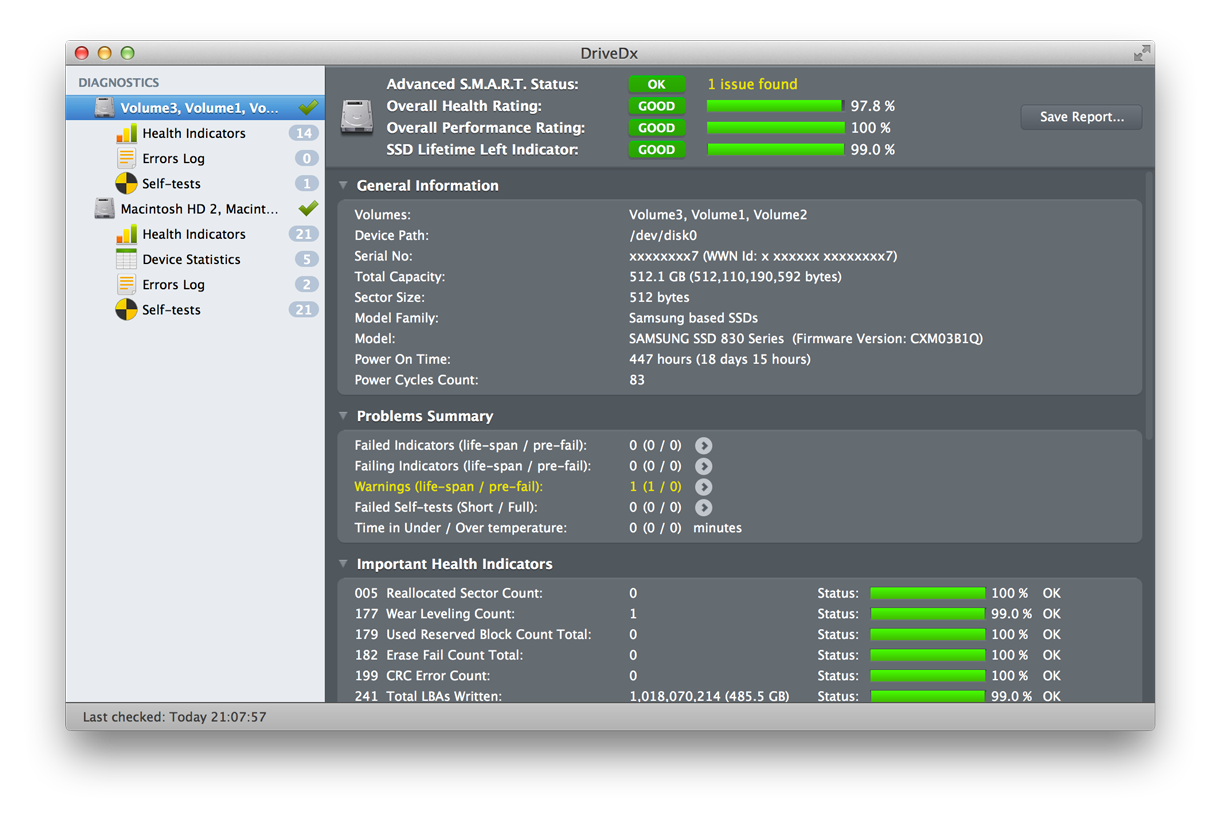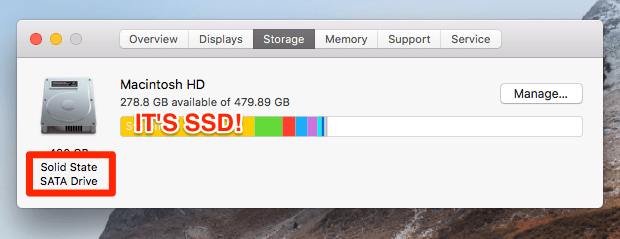- Hdd Test Macbook
- Test Hdd Macbook Pro
- Hdd Test For Mac Pro
- Hdd Checker For Mac
- Usb Drive Speed Test Mac
- Hard Disk Test Windows 10
How to check your Mac's hard drive health status?
- Mac hard drive test software - creating the definitive list. Disk Utility, diskutil (FREE, comes with OS) Smartmon Tools (FREE, Open Source) SMARTReporter ($4.95 for commercial version, but an older version is FREE) Scannerz Lite ($21.95) Scannerz with Phoenix and FSE-Lite ($39.95) Disk Tools Pro ($79.99) Disk Warrior ($99.00) Drive Genius ($99.00).
- Apr 08, 2014 How to determine if your Mac's hard drive is failing. There are various ways you can see if your Mac's drive is on its way out. April 8, 2014 4:47 p.m.
- Jan 18, 2012 The Mac's native Disk Utility application can help determine whether a system's hard drive is encountering trouble. While Disk Utility doesn't fix physically failing disks, it can help speed.
Internal storage is one of the most important components of any computer. This where the operating system and all software resides. Therefore, any crashes on the hard disk (HDD) or flash drive (SSD) might lead to a Mac failure or, even worse, data loss. Periodically checking the health status of the hard drive is a good precaution against any data loss or unexpected software crashes. Note that hard disks and especially flash drives often have a limited number of write cycles. Whether internal or external storage, drives are susceptible to failures over time.
Before data loss or problems accessing the Mac, you should be able to detect the warning signs of drive failures: random freezes, freezes when attempting to move files, errors stating that permissions are denied when attempting to access files or data (which previously were accessed regularly without problems). There might also be a number of other random or erratic issues relating to hard drive failure. Fortunately, Apple has included a built-in tool that is able to check and repair minor damage to storage. This method works on both internal and external storage (hard disk drive or flash drive). Furthermore, you can repair the startup disk by using the file system check function. In this article, we describe the methods available to check drive health status and attempt to repair bad sectors and other issues.

Table of Contents:
It is recommended to run a free scan with Malwarebytes - a tool to detect malware and fix computer errors. You will need to purchase the full version to remove infections and eliminate computer errors. Free trial available.

Check hard drive health via Disk Utility
May 24, 2012 This works for all hard drives, whether it’s an internal drive, an external drive, or a boot disk, though the process is slightly different for boot drives. Checking Hard Drive Health on Mac. The first thing you’ll want to do is check the hard drive health, this is done with a process called verification, and it’s quite simple.
As mentioned above, do not wait until you encounter erratic issues before checking the current status of the hard drive. To prevent any data loss or performance problems, periodically inspect the drive. This is quite simple using a built-in tool relating to the hard drive called Disk Utility. Use Spotlight by pressing the keyboard shortcut of Command and Spacebar, and then type Disk Utility. Alternatively, go to the Utilities folder under Application via Finder. Once you have launched the application, select one of connected drives from the list in the left hand sidebar. Click the First Aid button in the top middle of the window. You will be prompted to confirm your action. Click Run.
Hdd Test Macbook
If you are trying to check the status of a startup disk, another warning will pop up, stating that you are trying to verify a booted drive. To perform a complete check, the operating system will be frozen. If you are not performing any important, active tasks, click Run. All software will regain its full functionality immediately the verification process finishes.
When the First Aid function completes, the resultant message will state that the hard drive is OK. Otherwise, click Repair disk (if suggested) or try repeating the First Aid procedure until the result indicates that the hard drive is OK. Disk Utility is sometimes unable to repair a booted drive - in this case, follow the next method.
Repair startup disk via macOS Recovery mode
If you have encountered a situation whereby Disk Utility is unable to repair the hard drive when it is booted, there is another way to access the tool without loading the Mac. You are advised to first create a backup of the storage - the easiest way to do this is by using Time Machine. When you have prepared a backup, shut down the Mac and then press and hold Option (Alt), Command, and R while starting the computer. Keep holding the keys until the Apple logo or spinning Globe appears. From the macOS Utilities window, select Disk Utility.
Repeat the procedure to check the hard drive - select one of the connected drives from the list in the left hand sidebar. Next, click the First Aid button in the top middle of the window. You will be prompted to confirm your action. Click Run. Finally, click Repair disk if prompted and attempt to automatically repair the hard drive. Checking hard drive health status is good prevention against unexpected issues and data loss, however, also maintain regular backups, since hard drive failures can sometimes occur without any warning signs.
Use Single User Mode to repair hard drive
The most efficient method might be to boot the Mac into Single User Mode and use the fsck command - a shortcut to launch the file system check feature. First, create a backup and then shut down your computer. To access this mode, press and hold Command and S immediately after hearing the startup chime. In Single User Mode, you should see a lot of white text on a black display. Be patient, since this boot might take some time. Once booting is finished, each new line will be prepended with 'localhost//'. Type the following command and press Return to execute:
Test Hdd Macbook Pro
- fsck -fy

When the checking process is finished, look for a message stating 'The volume appears to be OK' in the results. Otherwise, repeat the system check until you receive this message. Finally, type reboot and press Return to exit Single User Mode. When the computer is completely booted, launch disk check via Disk Utility again to ensure everything is working properly. If none of these steps resolved the hard drive issues, contact Apple Store or a licensed technician.

Video Showing how to check Mac hard drive health status
After isolating an issue on your Mac to a possible hardware issue, you can use Apple Diagnostics to help determine which hardware component might be causing the issue. Apple Diagnostics also suggests solutions and helps you contact Apple Support for assistance.
If your Mac was introduced before June 2013, it uses Apple Hardware Test instead.
Hdd Test For Mac Pro
How to use Apple Diagnostics
- Disconnect all external devices except keyboard, mouse, display, Ethernet connection (if applicable), and connection to AC power.
- Make sure that your Mac is on a hard, flat, stable surface with good ventilation.
- Shut down your Mac.
- Turn on your Mac, then immediately press and hold the D key on your keyboard. Keep holding until you see a screen asking you to choose your language. When Apple Diagnostics knows your language, it displays a progress bar indicating that it's checking your Mac:
- Checking your Mac takes 2 or 3 minutes. If any issues are found, Apple Diagnostics suggests solutions and provides reference codes. Note the reference codes before continuing.
- Choose from these options:
- To repeat the test, click ”Run the test again” or press Command (⌘)-R.
- For more information, including details about your service and support options, click ”Get started” or press Command-G.
- To restart your Mac, click Restart or press R.
- To shut down, click Shut Down or press S.
If you choose to get more information, your Mac starts up from macOS Recovery and displays a web page asking you to choose your country or region. Click ”Agree to send” to send your serial number and reference codes to Apple. Then follow the onscreen service and support instructions. When you're done, you can choose Restart or Shut Down from the Apple menu.
This step requires an Internet connection. If you're not connected to the Internet, you'll see a page describing how to get connected.
Hdd Checker For Mac
Learn more
Usb Drive Speed Test Mac
If holding down the D key at startup doesn't start Apple Diagnostics:
Hard Disk Test Windows 10
- If you're using a firmware password, turn it off. You can turn it on again after using Apple Diagnostics.
- Hold down Option-D at startup to attempt to start Apple Diagnostics over the Internet.